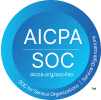“Happy employees ensure happy customers. And happy customers ensure happy shareholders — in that order.”
— Simon Sinek, Bestselling Author
Remember the Great Resignation that followed the pandemic and started in early 2021? Employees resigned en masse, citing limited career growth, hostile work culture, and long-standing work dissatisfaction.
Well, it’s back, but in a different form. Gallup calls it the “Great Detachment,” where employees become increasingly detached from their work. Per Gallup’s findings, 51% are looking for new jobs, the highest rate since 2015. And only 18% are satisfied with their current employers, reverting to its lowest point.
“The bad news,” states a Forbes article on the Great Resignation comeback, “is that you’ll be hanging onto people who have one foot out the door, which means they’ll hardly give you their all.”
And then there is quiet quitting. According to another Gallup report, there were 50% or more of disillusioned US employees by mid-2022, who only did the bare minimum to keep their jobs and “never went out of their way” to perform better.
What’s causing all this? One of the reasons, says Gallup’s great detachment article, is the rapid post-pandemic evolution of employee experience (EX) and customer experience (CX) expectations. While employees seek better work-life balance, higher compensation, and flexible work (read remote), 56% of them say customers demand enhanced experiences.
The outcome is staring you right in the face: dissatisfied and disengaged employees are delivering mediocre customer experiences (CX) at best.
This blog is all about how to turn that around in your favor. It explores how you can implement effective strategies to enable improved employee engagement and EX, which, in turn, positively impacts CX.
The crucial link between EX and CX
Employee satisfaction and experience are no longer on the back burner; they are central concerns for most businesses, as EX undeniably drives CX—a fact that has been established for decades now.
The way you engage with your employees can have both good and bad repercussions; these effects are not only confined to EX but also extend to CX. Stephen R. Covey’s words reflect it aptly: “Always treat your employees exactly as you want them to treat your best customers.”
Not surprisingly, in an IDC research, 85% of respondents believe that an improved EX and greater employee engagement translate to a better CX, customer satisfaction, and revenue.”
It’s common sense that unhappy employees can’t work well, creating a ripple throughout the business that, sooner or later, reaches your valued customers, too.
In a survey of over 1,000 U.S. employees, 64% said that EX impacts how they help customers. Dissatisfied employees were significantly more likely to report adverse effects on customer service. They were:
- Over twice as likely to cite negative impacts due to daily experience.
- Over 2.5 times more likely to admit providing inadequate service.
On the flip side, appreciated employees can work wonders for your company’s progress by going out of their way to ensure customer satisfaction. Even customers value ethical brands and prefer doing business with those that cherish their employees and treat them right, seeing such companies as a reflection of their own values. They also have the added advantage that respected and satisfied employees are more likely to resolve their issues quickly and more empathetically.
This not only boosts your company’s image but also translates to tangible outcomes, including greater revenue, improved customer loyalty, and sustained business growth. For instance, according to a PwC global survey, you can put a 16% premium on products and services if you complement them with delightful experiences.
Another study by MIT discovered that the top 25% of companies offering exceptional EX doubled their revenue from innovations, acquired 2x customer satisfaction, and achieved 25% more profit compared to the bottom quarter of companies.
Let’s get started with the top three effective strategies to boost positive EX and CX.
Strategy 1: The Internal Service Value Chain (SVC)
CX is not the prerogative of customer-facing employees only; every employee from every division of your business contributes to CX success. That’s where the concept of service value chain (SVC) comes in. While the SVC is a key concept in IT service management, you can also adapt its principles to improve EX in any industry.
In ITIL 4, the service value chain, a central component of the Service Value System (SVS), is defined as “a set of interconnected activities that all the business units of an organization use to create, deliver, and continually improve value.”
Put simply, the SVC helps develop value across various organizational functions to adapt to changing market demands. It emphasizes improved collaboration among employees from various business units, with a central focus on delivering greater value to customers.
As the proverb goes, “It takes a village to raise a child.” In the same way, it takes a collaborative, adaptable effort from various internal departments to deliver a consistently positive CX. Each employee, from top to bottom and across departments, shapes the customer’s journey and ensures their needs are met. Just as a child succeeds with strong community support, CX flourishes when employees work together in unison within the SVC.
Now, you may ask, “How do I do it?” Follow the steps below to apply the SVC to your EX and CX efforts:
- Map your internal service chain: Define employee lifecycle stages, such as recruitment, onboarding, training, development, and offboarding. Identify departments (e.g., HR, IT, accounts, management, etc.) servicing employees at each stage, and information/responsibility ‘handoffs’ among them.
- Measure internal service quality: Consider employees as ‘customers’ of internal services. Conduct meetings, interdepartmental surveys, and informal feedback sessions to gauge employee satisfaction with services at each stage. Listen to their internal and external communication to understand what makes employees happy or frustrated.
- Prioritize critical pain points: Rank internal services failing to adequately engage employees by their impact on customer satisfaction. Resolve the most urgent employee concerns—outdated technology, resource scarcity, work-life imbalance, and a lack of management support—using friendly ways to prevent them from becoming grumpy.
- Promote better communication and collaboration: Establish centralized communication channels to break silos, ensuring smooth information flow and management support. Motivate cross-functional cooperation and open communication. Valued employees begin enjoying their work and provide excellent customer service.
- Connect EX to CX metrics: Measure customer satisfaction as the outcome of SVC-based employee engagement initiatives and calculate the ROI of service quality. For instance, if you improve employee onboarding, do you see a corresponding increase in customer satisfaction scores for services provided by new hires?
By using SVC for continuous improvement, you effectively implement the Harvard Business School’s Service-Profit Chain (SPC) theory, which propounds that employee satisfaction directly contributes to profitability, creating a positive growth cycle. High-quality internal processes lead to satisfied and loyal employees who, in turn, become more productive and deliver greater value to customers. This enhances CX and drives customer loyalty, profitability, and growth, ensuring long-term business success.
Case in action
Southwest Airlines perfectly puts the SVC and SPC theories into practice. By prioritizing financial benefits, autonomy, and well-being, they take good care of their employees and inspire them to proactively meet travelers’ evolving demands. The result is that Southwest consistently ranks high in CX rankings and beats its competitors, confirming the link between a strong service culture and business success.
Strategy 2: Employee Journey Mapping
Just like customers, employees are human, too. And just like CX teams use customer journey mapping to enrich CX at every touchpoint, employee journey mapping allows you to do the same for your employees.
The premise is that employee experience is how they feel throughout their employment journey, which you can decipher from how they interact at every stage.
Why use employee journey mapping
Mapping the employee journey offers a unique perspective by visualizing the employee experience as a continuous narrative with key moments spread across their journey with your organization, from job application and recruitment to offboarding.
The purpose: Identify key employee concerns using the map plus employee feedback, and develop targeted strategies to resolve them.
The bottom line: Attract and retain high-performing employees, boost their satisfaction and loyalty, and get them to excel at providing the best possible CX.
While it may sound simple, it takes a lot of planning and effort to achieve it. Let’s break it down:
1. Determine employee types and create personas
Different employees have different journeys, depending on the kind of work, working hours, compensation structure, and so on. The first step is to categorize employees into segments and create a profile, or a persona, for each one. For instance, finance teams and tech support teams will have distinct experiences, and a remote worker will feel differently than an in-office employee.
2. Create the employee journey map with key stages and touchpoints
Next, build an employee journey map that consists of that persona’s lifecycle stages, key touchpoints for every stage, predefined processes, employee feelings, pain points, and advised actions. The journey stages may include job candidature, recruitment, onboarding, training, performance reviews, career progression, and offboarding. You can also define more granular events, like a training, wedding, illness, or recognition, to go deeper into the employee journey. Describe what should ideally happen at each touchpoint.
3. Gather employee feedback
Now, the time is to understand what is actually happening at each key incident and how employees feel about it. Conduct pulse surveys, private one-on-ones, annual reviews, and exit interviews, and listen in on internal chatters and external monologues or dialogues, such as those happening on employer review sites, social media, and online discussion forums like Reddit.
4. Apply AI-powered data analytics to feedback
Use AI-powered tools to analyze employee sentiment using data obtained directly or indirectly from sources, such as feedback, stories, observed behavior, interviews, and focus groups, extracting actionable insights into EX metrics. Map these insights to particular stages in the employee journey and use visualization tools to understand general sentiment and discern specific patterns in their attitude, behavior, and concerns at each touchpoint.
5. Identify improvement opportunities
Use the derived insights to identify pain points, moments of delight, and areas for improvement in each phase, and prioritize remediation to enhance EX. For instance, if increasingly more employees leaving your company blame outdated technology and a lack of career growth, you can map these responses to IT and HR units, respectively, and direct them to develop action plans to upgrade technology and enhance development opportunities.
6. Update the map regularly
Employee journey mapping is not a one-time process. As circumstances change and employees’ needs evolve, keep brushing up the map to reflect periodic and real-time feedback on EX, including new concerns and resolution strategies.
Case in action
With an understanding that world-class EX translates to exceptional service to customers (veterans), the Veterans Experience Office (VEO) at the U.S. Department of Veterans Affairs successfully uses employee journey mapping every year. They develop an EX journey map, capturing over 11,000 data points from more than 21,000 VA employees’ surveys conducted using ESignals technology. The map comprises major employment phases, sub-phases, and “moments that matter” to employees. The map provides VEO with enhanced understanding of factors affecting EX and actionable insights into resolving their pain points, informing future EX and CX enhancement initiatives.
Strategy 3: The Internal Brand Advocacy Framework
Most organizations think of marketing as an endeavor to sell more to customers, forgetting they need to first sell to their employees, enabling them to connect emotionally with their products/services. Ask yourself this, “Who can be better than employees to promote the brand?”
By getting more employees on your side, you can create a brand image that your competitors will envy. Applying ‘internal marketing’ to employee engagement allows you to create internal brand ambassadors (employees) who advocate your brand with authenticity, building greater stakeholder trust and skyrocketing customer satisfaction and loyalty.
The best way to do this is to convince your ‘internal customers,’ just like external ones. By taking a strategic, data-driven approach, you can convert non-believers into believers (ha, ha!), and build a stellar team of internal brand advocates:
1. Ensure employees follow core values and mission
Internal branding isn’t just campaign awareness; it’s about embedding the brand’s DNA into your work culture. This is where you make employees feel and live the brand, aligning their daily tasks with the organization’s vision and mission. You can start by calculating eNPS scores to uncover what your employees feel about the brand. This will give you insights into improving employees’ brand perception and aligning them with the company’s core values, nurturing a strong company culture that translates to improved CX and customer satisfaction scores.
2. Choose when to redirect the employees
Change is often tough, and employees might resist it. Coincide internal branding initiatives with major events (like a merger or leadership shift) when your folks are already expecting big changes. Use quick pulse surveys and analyze survey results using AI tools to gauge employee preferences about the right “turning point”.
3. Align internal and external messaging
Match what you’re telling your customers to what you’re telling your employees. Selling different ideas to your internal and external people could result in mistrust and act as a growth blocker. Use AI-powered data analytics to compare internal communications with external promotions and identify inconsistencies or gaps, gaining valuable insights into how to resolve them.
4. Craft targeted and authentic internal communication
Persuade your employees with creative, authentic internal content just as you would convince your customers. Make them visualize the special and unique aspects of your brand; weave them into everything from office spaces and employee portals to internal policies and job postings. Leverage AI to segment employees based on roles, location, and interests, and personalize messages to ensure they really hit home.
5. Improve employee engagement and identify brand advocates
Employees who sincerely believe in the company’s values tend to promote your brand with real enthusiasm. For this, you can positively engage them by encouraging open communication, acknowledging contributions, providing growth opportunities, and introducing wellness programs. Leverage AI to analyze employee sentiment and influence networks to pinpoint the most effective advocates and incentivize them to keep promoting your brand.
Case in action
Dell uses the internal brand advocacy strategy through an inclusive workplace culture, where team members are motivated to give their best and encouraged to actively participate in employee resource groups (ERGs). This camaraderie helps them strengthen their relationship with others and align with the company’s values.
The company has instigated programs like employee-led listening sessions and inclusive leadership training. These initiatives result in better EX and employees becoming authentic advocates, both within and outside the organization.
Master EX to become a leader in CX
Investing in enhanced employee experience is no longer optional; it’s an imperative in today’s employee-centric business environment. The strategies we discussed can help you create pleasant experiences for your employees, which motivate them to excel at work and deliver out-of-the-world CX, boosting customer loyalty and retention.
It’s not just a fad; it’s a long-term strategic priority to promote greater employee engagement, offer enhanced CX, build customer trust, and achieve sustained business growth.
Not only that, but your company will also become appealing to the existing workforce and highly sought after by top talent if you’re committed to employee growth and well-being.
You can partner with an EX platform provider like Sogolytics to leverage technology to implement these techniques quickly and efficiently.
Request a demo today to explore how SogoEX can help you improve EX and drive enhanced CX through advanced survey, journey mapping, and AI analytics capabilities.














